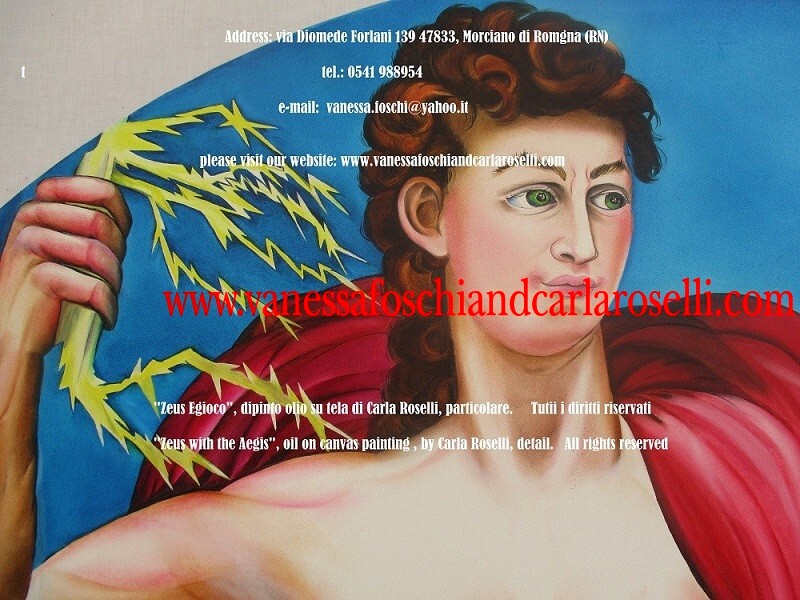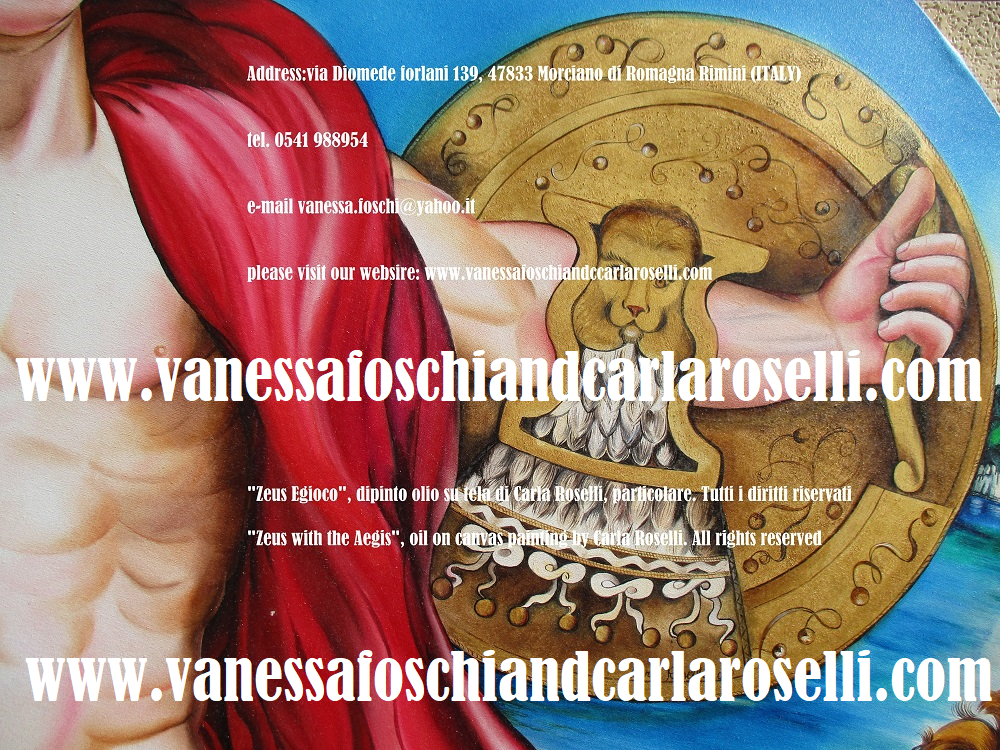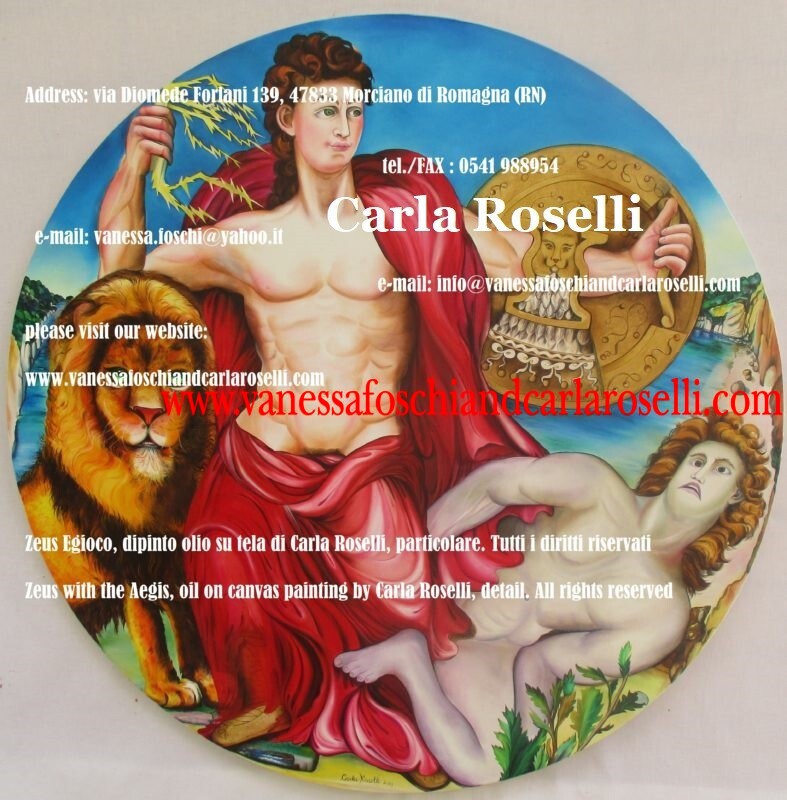Jupiter bearer of the aegis
In the painting “Jupiter bearer of the aegis” by Carla Roselli Jupiter Zeus, the king of the gods, son of Cronus, is depicted.

He is caught in the act of defeating one of the Giants, children of the Earth, Mimante the destroyer. The Giant could imitate any form and take on any aspect he wanted (Euripides, “Ion”, v. 2015). Zeus first paralyzes him by shaking the “tremendous aegis, garnished with flakes”, then pierces him with the huge thunderbolt. Finally he burns it and reduces it to ashes.
KING OF THE GODS
The king, also called by Homer the “gatherer of black clouds”, is the lord of the storm, dangerous, sudden and flaming. From him come the celestial seeds, the drops of clear rain, which the earth receives. Thanks to them, brilliant crops and happy shrubs are generated, the soul and life of all animal lineages. (Lucretius De rerum natura II, 991)
ROYAL POWER
From Zeus derives the Regality itself, the Power of the Kings, from which in turn originates all the power of a people (Homer, Odyssey, V); for this reason the Poet defines the kings as pupils of Zeus and divine. If the king is righteous, the earth blazes with crops, trees bear fruit, flocks multiply and the sea teems with fish; the people enjoy fruitful prosperity (Homer, Odyssey, XIX). From Zeus derives the Regality itself, the Power of the Kings, from which in turn originates all the power of a people (Homer, Odyssey, V).

LORD OF THE STORM
The sovereign, also called by Homer the gatherer of black clouds, is the lord of the storm, dangerous, sudden and flaming. In his hands he wields the power of lighting (Sophocles, Oedipus the King, parodos).
From him come celestial seeds, the droplets of clear rain, which Earth receives. Thanks to them, brilliant crops and happy shrubs are generated, the soul and life of all animal lineages. (Lucretius, De rerum natura II, 991).
AEGIS-BEARER
The painter Carla Roselli was inspired by the Aegis, the shield that inspires terror; with it the god spreads thunder, lightning and swirling storms; it is all decorated with bows and fringes (Homer, Iliad); some say that it was created with the skin of Amalthea, the nurse goat of Zeus, the god “with a great roaring voice”. Just shake it slightly to instill panic even in the soul of seasoned warriors. Often Athena, Zeus’s favorite daughter, borrows her (Homer, Iliad). According to Ares, the bloodthirsty god subverter of walls, ruin of mortals, the predilection arose from the fact that the father of gods and men had generated Pallas Athena alone, without female intervention (Homer, Iliad, V).
OWNER OF OLYMPUS
Sophocles (Antigone, II° stasimon) thus sings it “Power that Sleep, enchanter of all men, never takes, nor wears out the tireless divine months, sire who does not age over time, you possess the dazzling splendor of Olympus”.

Zeus Egioco, dipinto olio su tela di Carla Roselli da Morciano
CRETAN MYTHS
Others maintain that Zeus, son of Rhea, killed her goat and put on her skin; then he used the horns to make an arch and that is why a certain place in Crete was called Aigidokon (gift of the goat), according to Euphorion (Scholia Palaia en te Iliada, II, p. 48).
Technique: oil on canvas . Painted by Carla Roselli. Written by Vanessa Foschi, 2017/2018. All rights reserved
vanessa.foschi@yahoo.it




